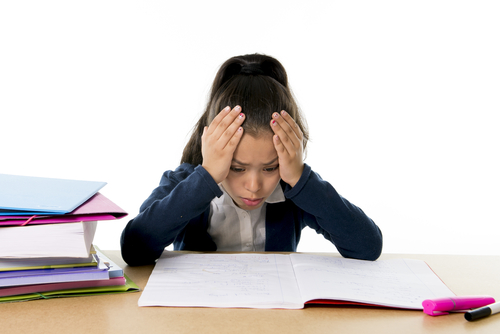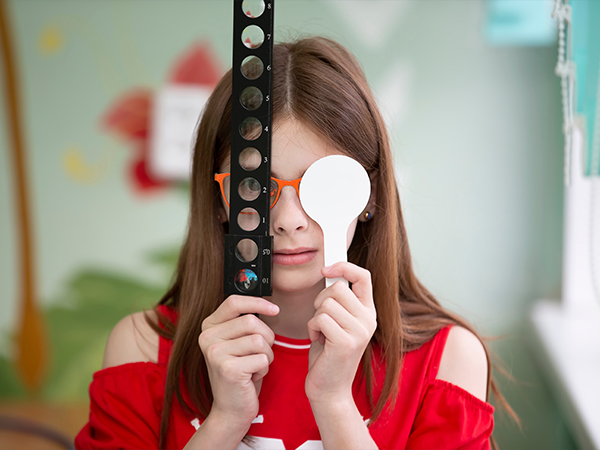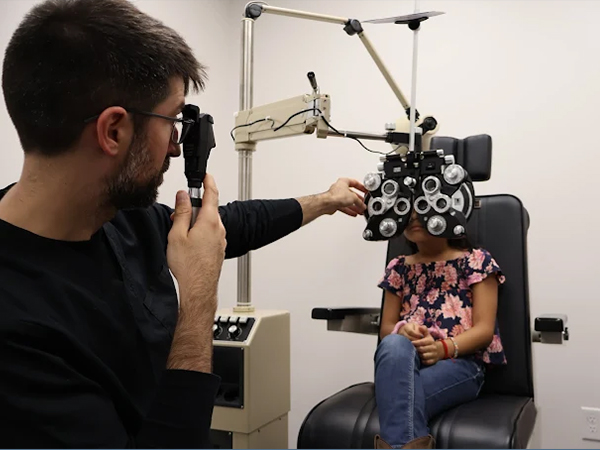The Hidden Visual Skills Every Reader Needs (That Aren’t Taught in School)

Why Some Kids Struggle to Read—Even When They’re Smart, Motivated, and Have 20/20 Vision
“He’s trying his best, but something just isn’t clicking.” “She can memorize sight words but struggles to track across a page.” “He reads fine for a few minutes, then complains of a headache.”
If this sounds familiar, you may have a child who’s smart, hard-working, and still struggling to read fluently. You’ve ruled out poor motivation. You’ve gotten their eyes checked. Maybe you’ve even tried tutoring.
So why does reading still feel like a battle?
Here’s one possibility most parents (and teachers) don’t hear about: Your child may be missing key visual skills that are never tested in school or during a routine eye exam.
Vision Is More Than 20/20
When people think about vision, they usually think about clarity. Can your child see the board? Can they read the letters on the eye chart?
But when it comes to reading and learning, clarity is just the tip of the iceberg.
To read smoothly and comfortably, your child’s brain and eyes need to perform a complex set of tasks, rapidly and in perfect coordination.
We call these functional visual skills. They’re often overlooked, but absolutely essential for reading success.
The Visual Skills Most Kids Aren’t Taught (or Tested For)
Let’s take a look at what’s really required to read fluently:
1. Eye Teaming: This is the ability to use both eyes together as a coordinated team. If the eyes don’t align properly, words may appear to move, double, or blur.
Red flags: Losing place, skipping lines, avoiding reading.
2. Eye Tracking: This is the ability to move the eyes smoothly across a line of text and jump accurately from one word (or line) to the next.
Red flags: Rereading lines, poor fluency, finger tracking beyond early grades.
3. Eye Focusing: The ability to quickly and accurately shift focus between near and far (e.g., from the board to the desk) and maintain clear focus while reading.
Red flags: Frequent squinting, rubbing eyes, slow copying from the board.
4. Visual Memory: This skill helps children remember what they’ve seen—like sight words or spelling patterns.
Red flags: Trouble with word recognition, poor spelling, slow to learn new words.
5. Visual Processing Speed: The brain’s ability to interpret and make sense of visual information efficiently.
Red flags: Slow reading rate, difficulty completing timed assignments.
6. Visual-Motor Integration: This links what the eyes see to what the hands do—critical for writing, spacing, and copying accurately.
Red flags: Messy handwriting, letter reversals, difficulty copying shapes.
7. Visual-Auditory Integration: This allows children to match what they hear (phonics) with what they see (letters on the page).
Red flags: Confusion between similar-sounding or similar-looking words.
Why These Skills Aren’t Caught in School (or at the Eye Doctor)
School vision screenings typically only check distance clarity.
Routine eye exams focus on eye health and sharpness of sight, not how the eyes function during reading.
Tutors and teachers may not be trained to spot visual inefficiencies, especially if the child is bright and verbally strong.
That’s how these issues can hide for years, causing frustration, fatigue, and even misdiagnoses of ADHD or dyslexia.
What Happens When These Skills Are Weak?
A child with weak functional visual skills might:
Work twice as hard just to keep up
Seem easily distracted or “checked out” during reading
Read fluently out loud but not remember what they read
Complain of headaches or eye strain
Avoid books altogether
It’s not a lack of intelligence. It’s not laziness. It’s not that your child “just doesn’t like to read.” It’s that their visual system is working too hard to do something that should be automatic.
How Vision Therapy Can Help
Vision therapy is like physical therapy for the eyes and brain. It’s a research-based, individualized program that helps children develop the visual skills they need to read, learn, and thrive.
At our clinic, we start with a functional vision evaluation that goes far beyond a routine eye test. Then we design a therapy program tailored to your child’s specific needs.
Improvements we often see after therapy include:
Smoother, more fluent reading
Better reading stamina and comprehension
Reduced headaches and visual fatigue
Increased confidence and willingness to read
Improved attention during homework
One Family’s Story
8-year-old Emma was bright, creative, and full of ideas, but reading made her melt down. Her parents tried everything: phonics tutoring, ADHD screening, eyeglasses checks. Nothing helped.
When she came to us, we found that Emma had poor eye tracking and visual memory skills. We started vision therapy. Within weeks, she began reading with less resistance. By month three, she was reading whole pages without frustration, for the first time in her life.
What You Can Do Next
If your child is struggling to read—despite your best efforts—don’t wait. Ask these key questions:
Has my child had a functional (not just routine) vision evaluation?
Have we ruled out visual processing difficulties that might mimic or worsen learning issues?
Is reading a source of tension or fatigue at home?
If the answer is “no,” we’d love to help you find out what’s really going on.


